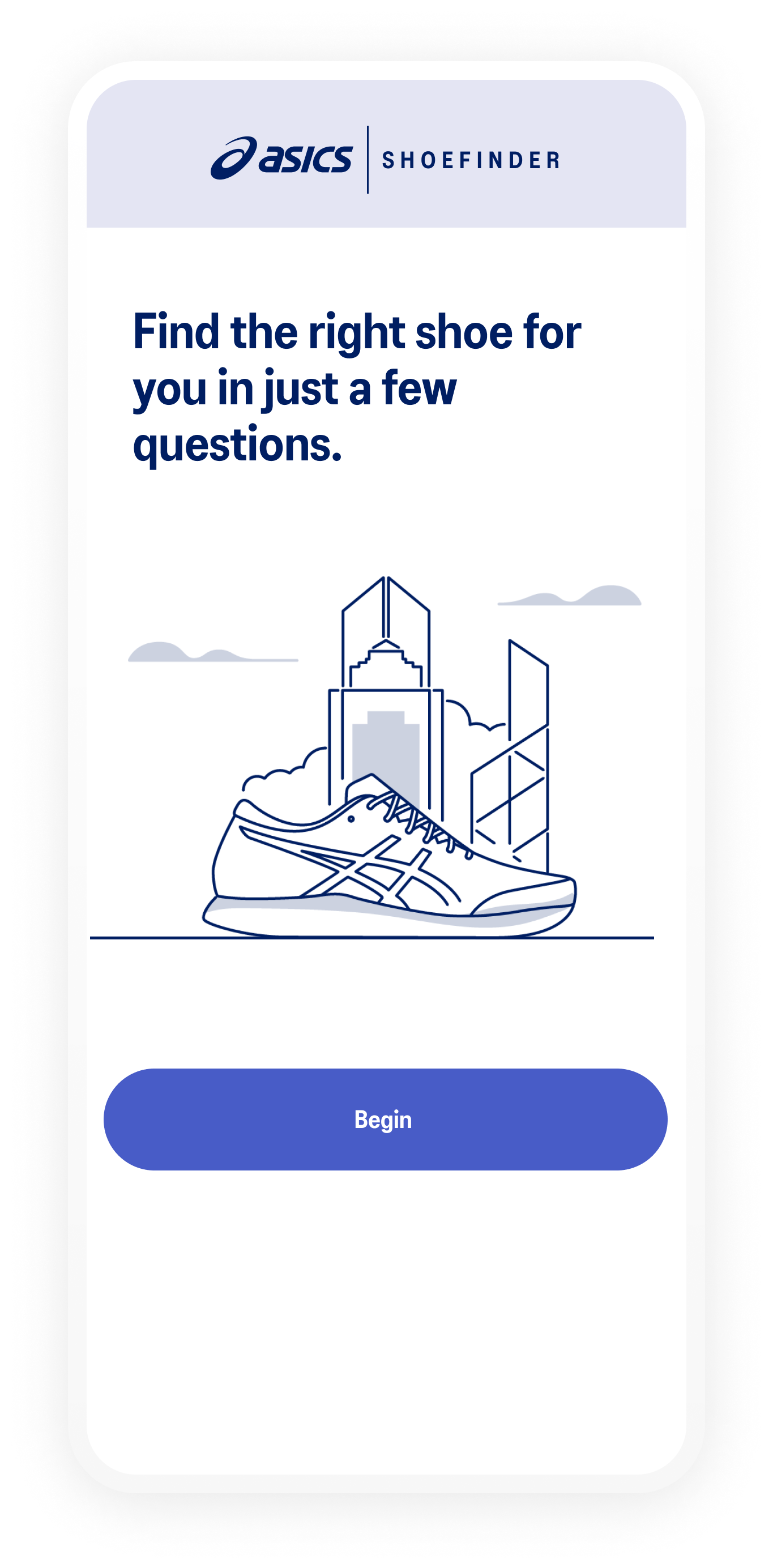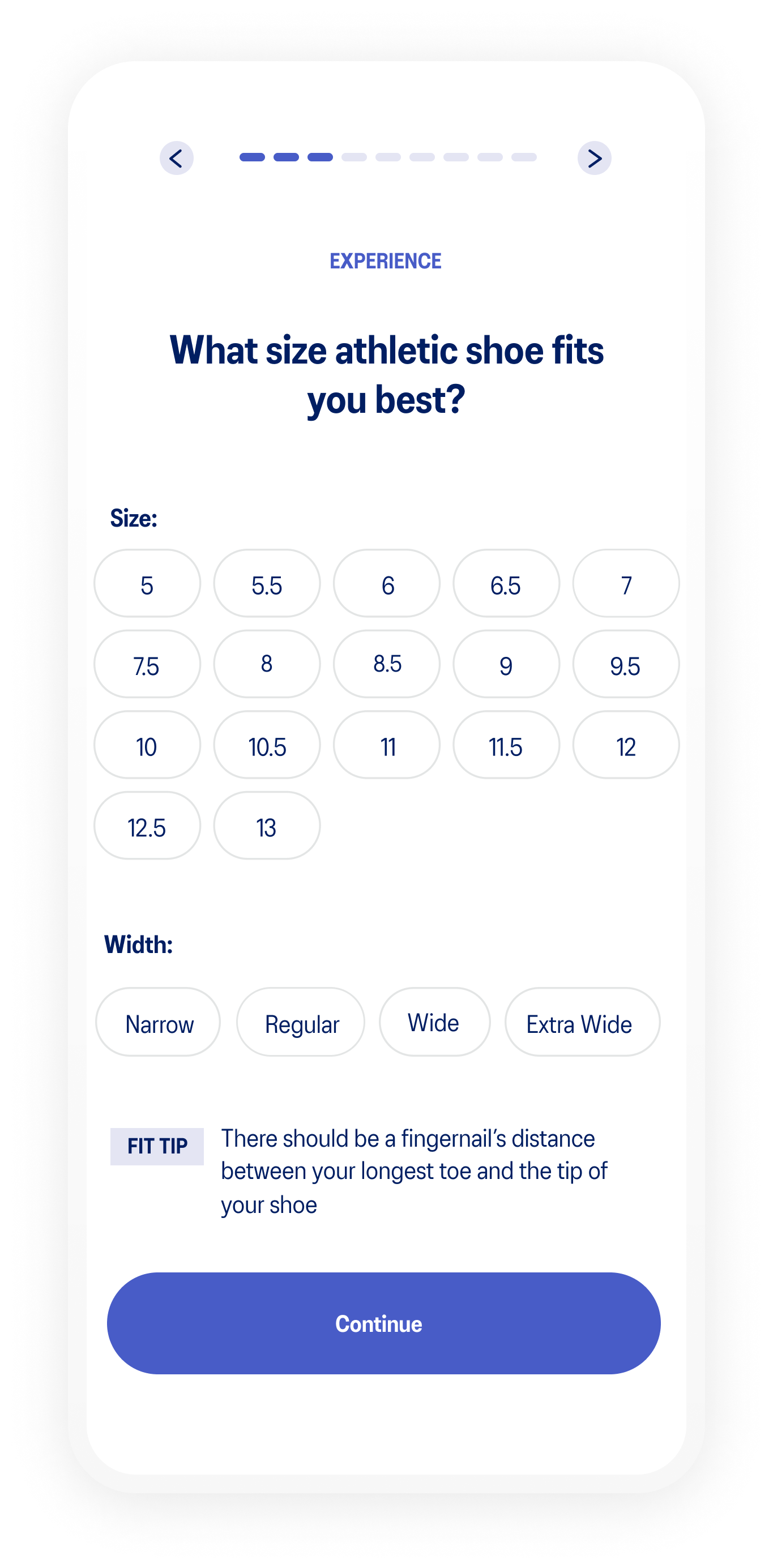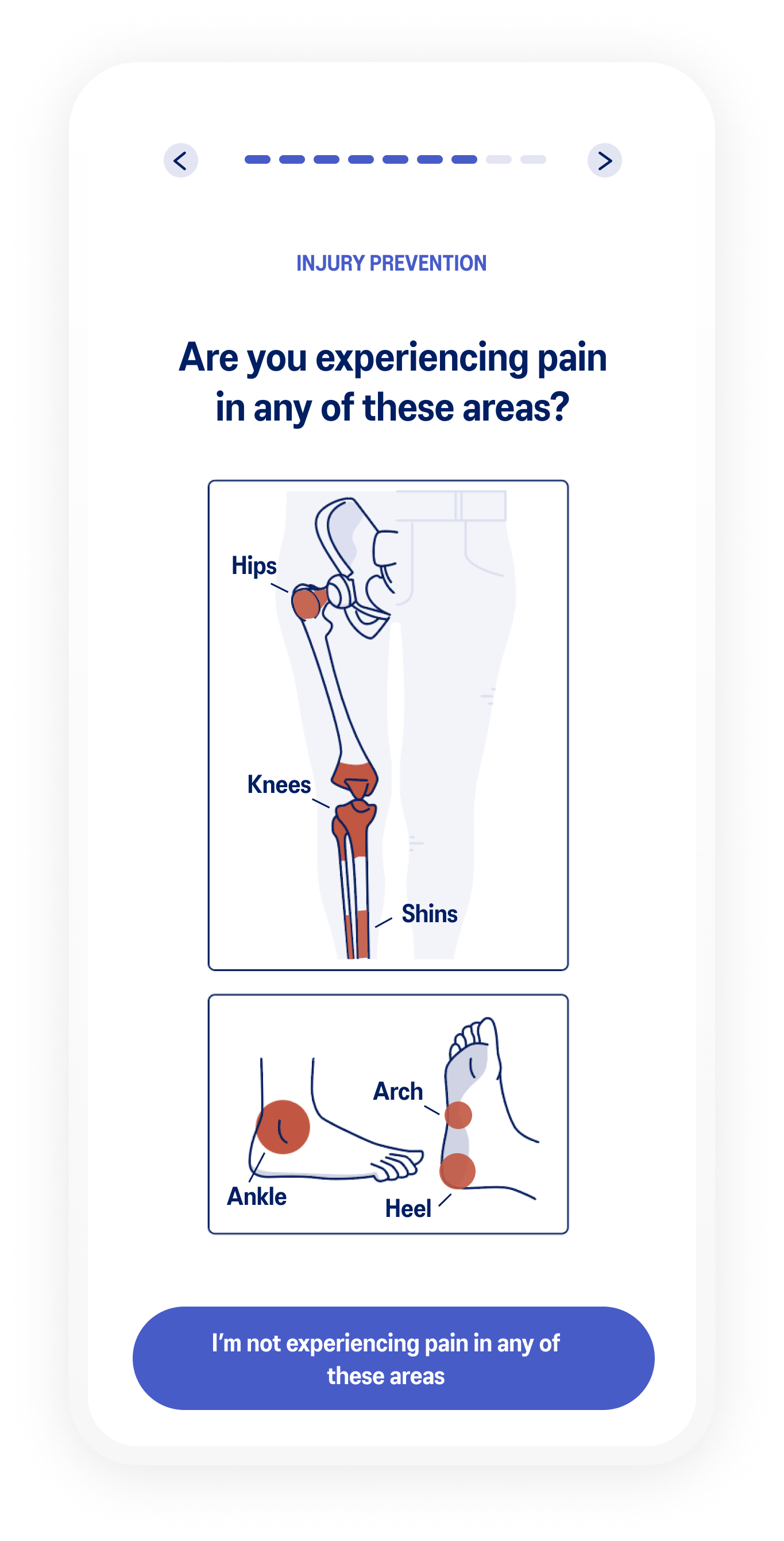ASICS Shoe Finder
Customers who go through the current ASICS Shoe Finder experience have a higher chance of converting. They feel like a more personalized recommendation has been made and they trust the options more since they have been narrowed down just for them.
With COVID closing all of the ASICS stores at different times this year, we wanted to see how we could better replicate the personalized in-store experience within the digital shoe finder experience. Our goal was to help those who would rather have the person-to-person guidance they would seek they through the physical experience. The assumption is that a new and better experience would also result in higher conversion of customers overall.
Customer Goals:
Provide recommendations that will help them avoid injury and support their maximum physical potential.
Build confidence that they are making the right purchasing decision that will best meet their individual needs.
The current shoe finder experience is based on a 3-step process that is delineated within the store experience. But there are a lot of things additionally happening in the store that add to the 3 steps in ways that are much harder to replicate digitally.
Some examples of the in store elements include:
• The customer has all color ways and models exposed to them at once.
• Store associates can help guide the customer through the 3 main steps, while also including 7+ other steps that they take on their own. These include evaluating height/weight, injury, foot and arch shape, current shoes, etc.
• The customer can physically try on the shoe to gauge comfort.
• The customer is surrounded by artifacts and branded representations of the sport they are pursuing. The floor might be shipped like a track, there may be mannequins in a runner stance and images of pro athletes getting ready to move. All of these peripheral suggestions put the customer in a heightened sense of awareness of the actions or purchases they are trying to make.
Based off of the wall display, the current decision tree is quite limited. It is finished in 5 steps and the results can be anywhere from no matches to hundreds.
Discovery
To better understand how to make the digital experience better, we started from the physical. Designers, Product Mangers and Developers were tasked with going to shoe specialty stores to get fitted and bring back learnings about the experience.
I also set up workshops on the selling process with the category teams, where they taught how technical reps fit customers and sell performance shoes.
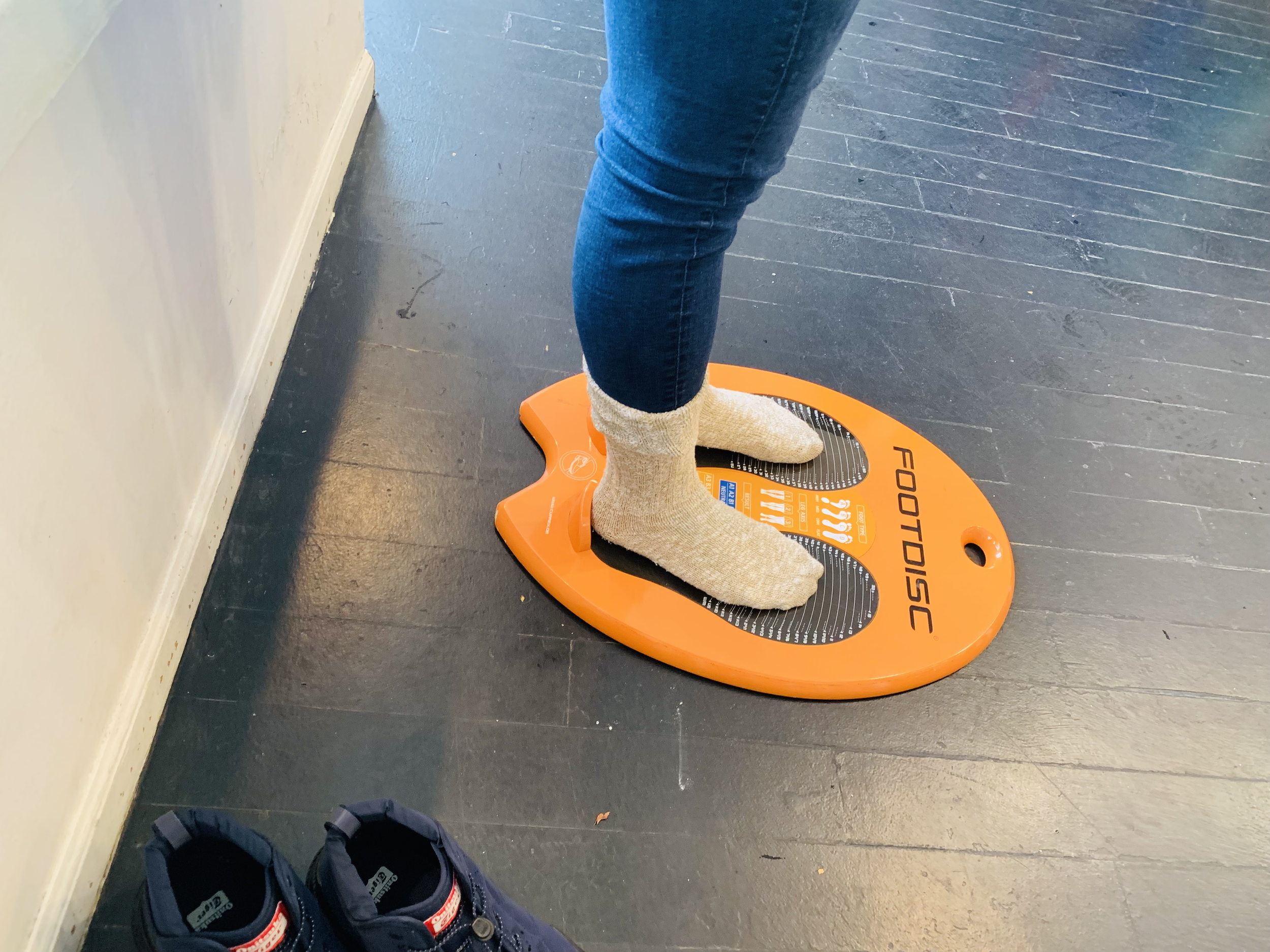
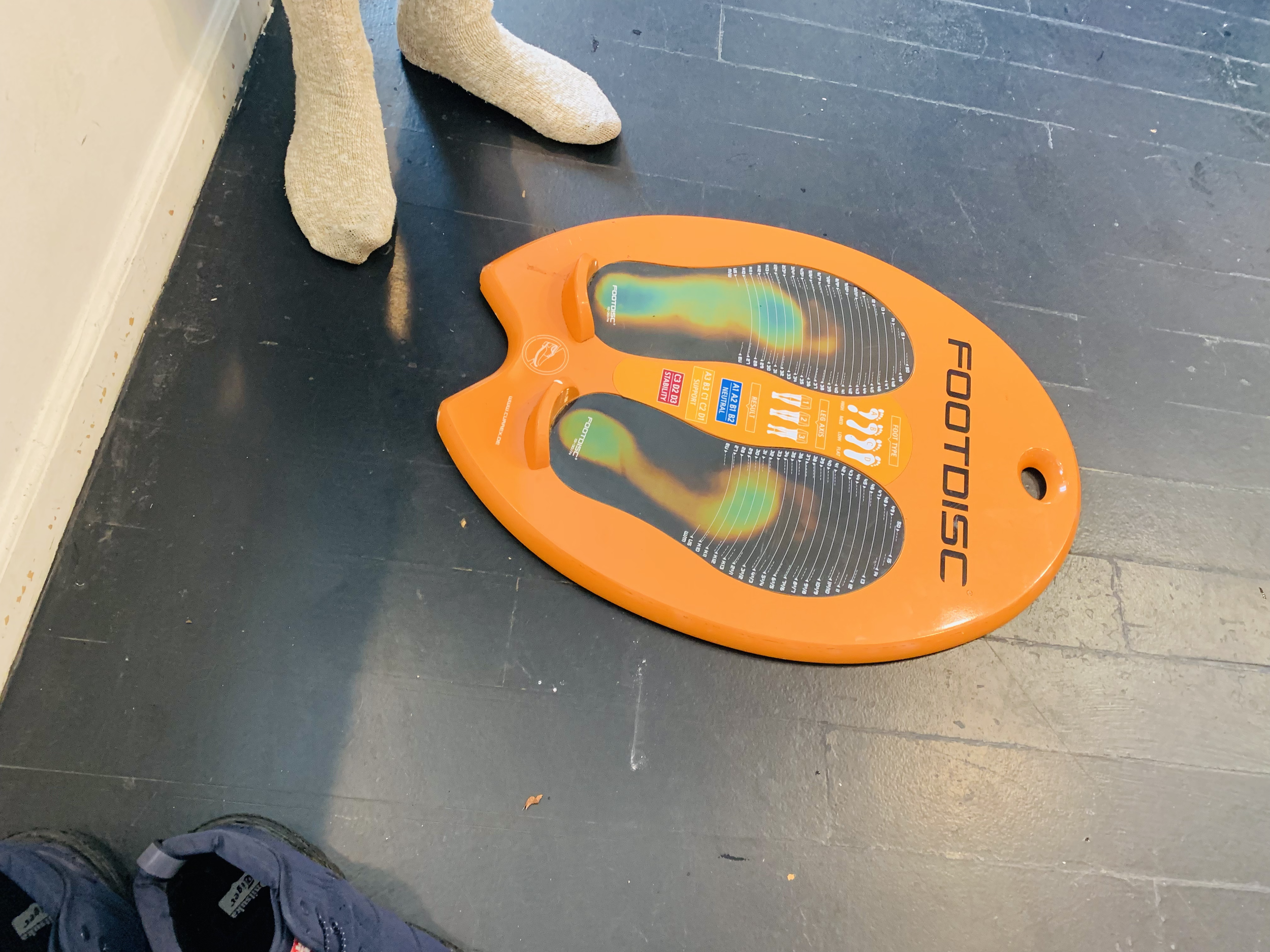
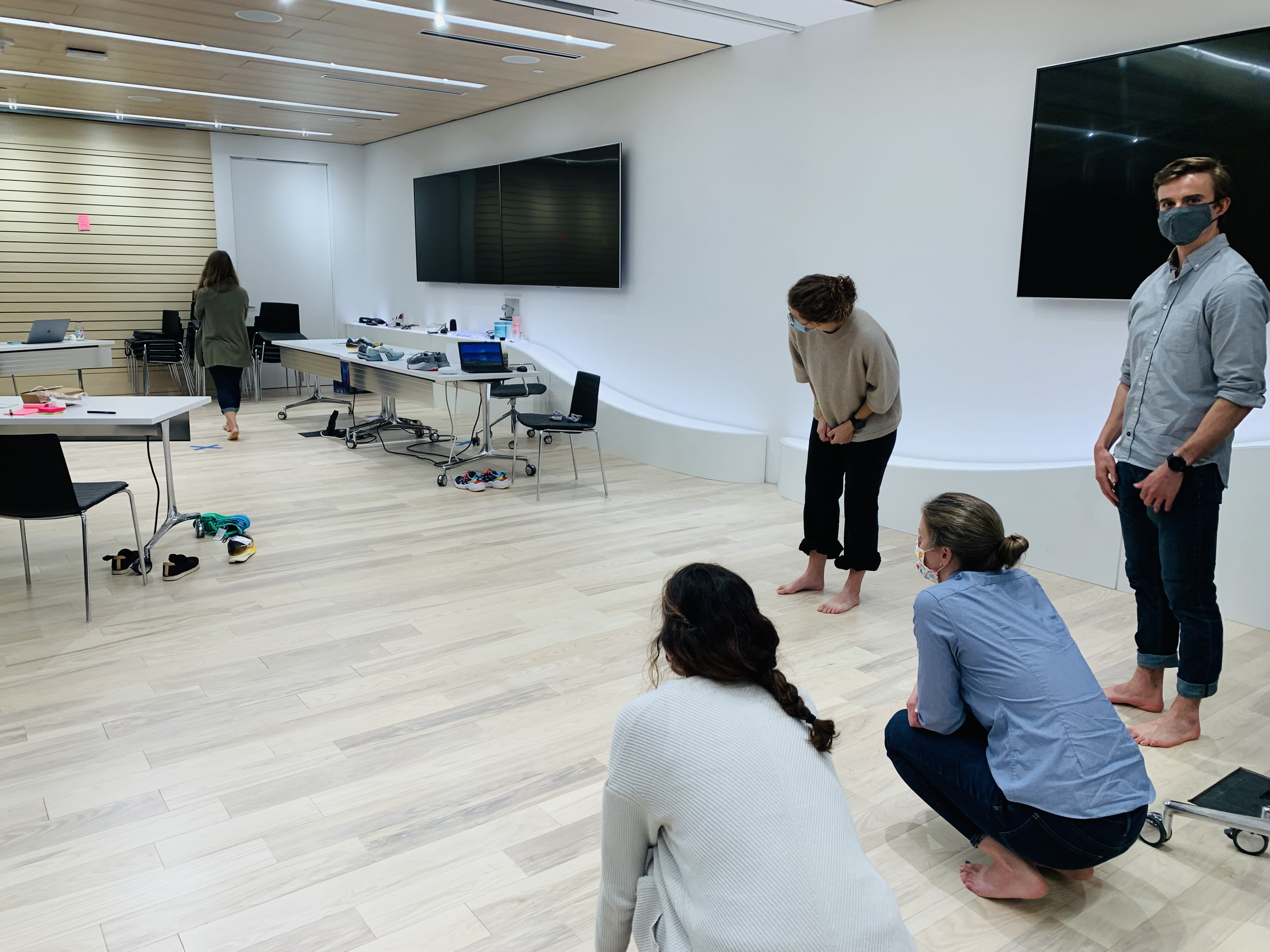
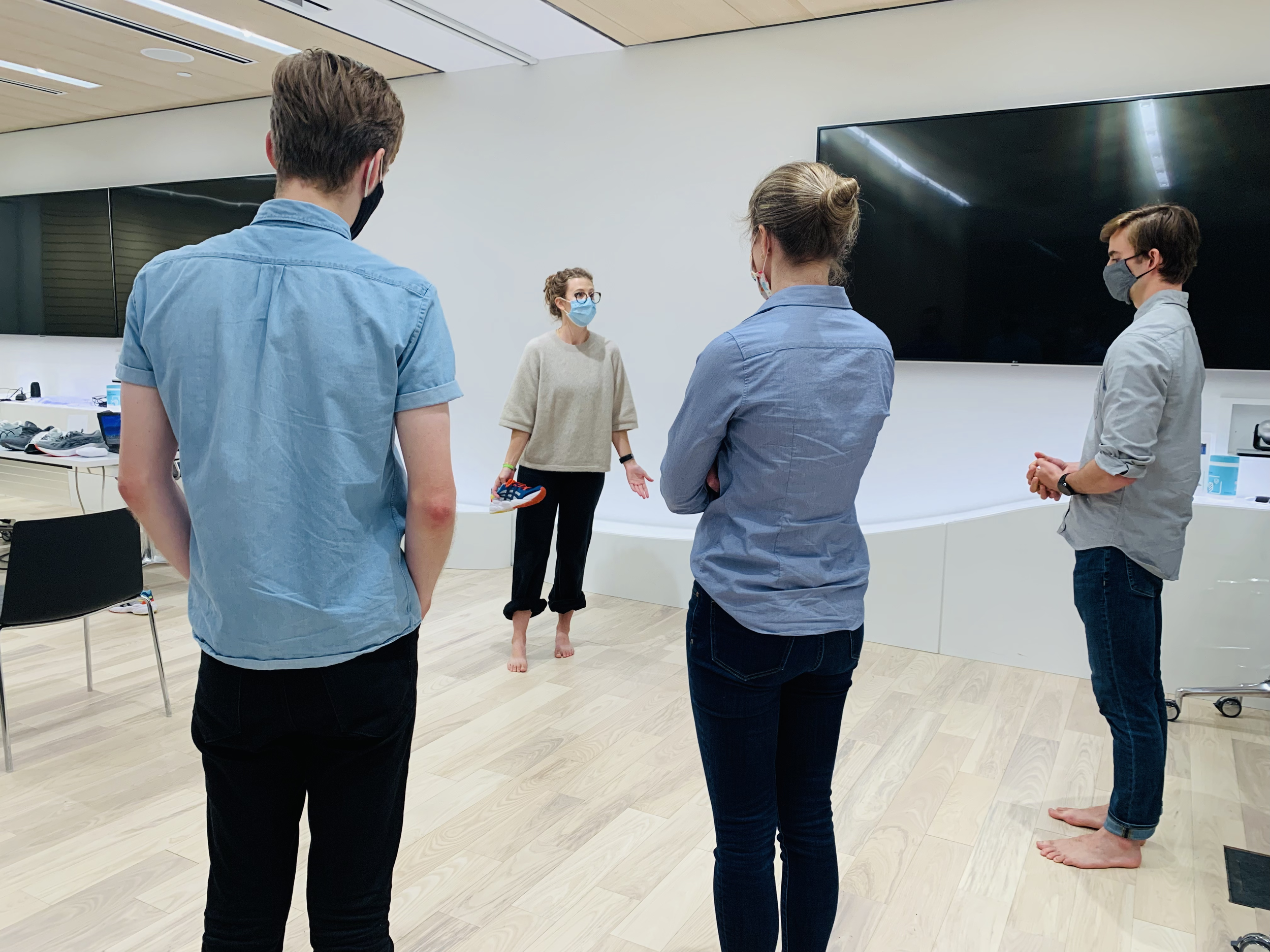
Insights and Opportunities
Below are the top findings uncovered through a series of customer interviews, site intercepts, surveys and working with customer service.
Why Customers Use A Shoe Finder
Finding a shoe that suits their purpose(s):
Based on the segment, customers have different expectations for the use of their shoes.
Accommodating Specific Conditions:
“I need something for my…” injury, bunions, high arches, plantar fasciitis, wide feet, orthotics, arthritis…
Beginning or Returning to Running:
Having been away from or new to running - these customers are looking for advice on what they need.
Comparing Options:
Faced with too many options, shoe finder is an alternative to trying to manually compare.
Changing Brands:
Coming from a competitor, some are looking for comparable or better options.
Buying Their Next Pair of ASICS:
Returning customers are often curious about alternatives to their favorite shoe
What Customers Care About
Number of results:
When there are too many, consumers are overwhelmed. When there are too few, customers don’t trust the results.
Availability:
Results not available in their size or width immediately causes friction.
Price:
Many customers would like recommendations at a variety of price points.
Style:
Less advanced runners ultimately prioritize style over feature recommendations.
Fit Guidance:
Consumers would rather go in store to be fitted or use what they know about their fit in other models/brands than use an online tool.
Comprehension:
Technical decisions around pronation and cushioning cause confusion.
Explanation of Recommendations:
Customers want to know why the recommendations are right for them and how the options are different before they will trust the results – especially if the options are relatively expensive.
A New Decision Tree
From 5 areas to many more - looking at the ways that we could help customers self-assess their needs became a much deeper and revealing experience.
With the main themes in mind, question mapping revealed that we could consolidate some of the topics into fewer questions.
With an idea of the experience in mind we moved toward low fidelity prototyping. These prototypes were used to start testing the questions as well as start mapping out the type of technology needed to be built to make the flow dynamic and easy to manipulate.
Each region may have slight changes they want to make - especially to the recommendations - based on the catalogs they have and the type of customers they serve. As an example of this, our AJP customers want to select the type of race they are going to compete in rather than just looking for a shoe focused on speed.
Shoe Finder Design Principles
Personalize the connection by understanding unique customer wants and needs.
Provide dynamic flows based on the customer’s goals and purpose for the shoes.
Build trust in ASICS expertise by humanizing the technology and terminology.
Grow customer confidence throughout to help with purchasing decision.
Make the process intuitive and fun with seamless transitions and interactions.
Connect customers with the ASICS brand in ways that reflects Sound Mind, Sound Body.
Work in Progress
This is actually a work in progress that I am likely running customers through as you’re reading this :D
We are at the high-fidelity stages. I am working with an illustrator to provide a branded illustration style for technical features like this one.
Below you can see where we are at with the questionnaire experience.
In parallel we are working on final result pages that provide the top 3 recommendations as well as reasons why each shoe was selected for the customer’s needs.
Overview of look/feel
